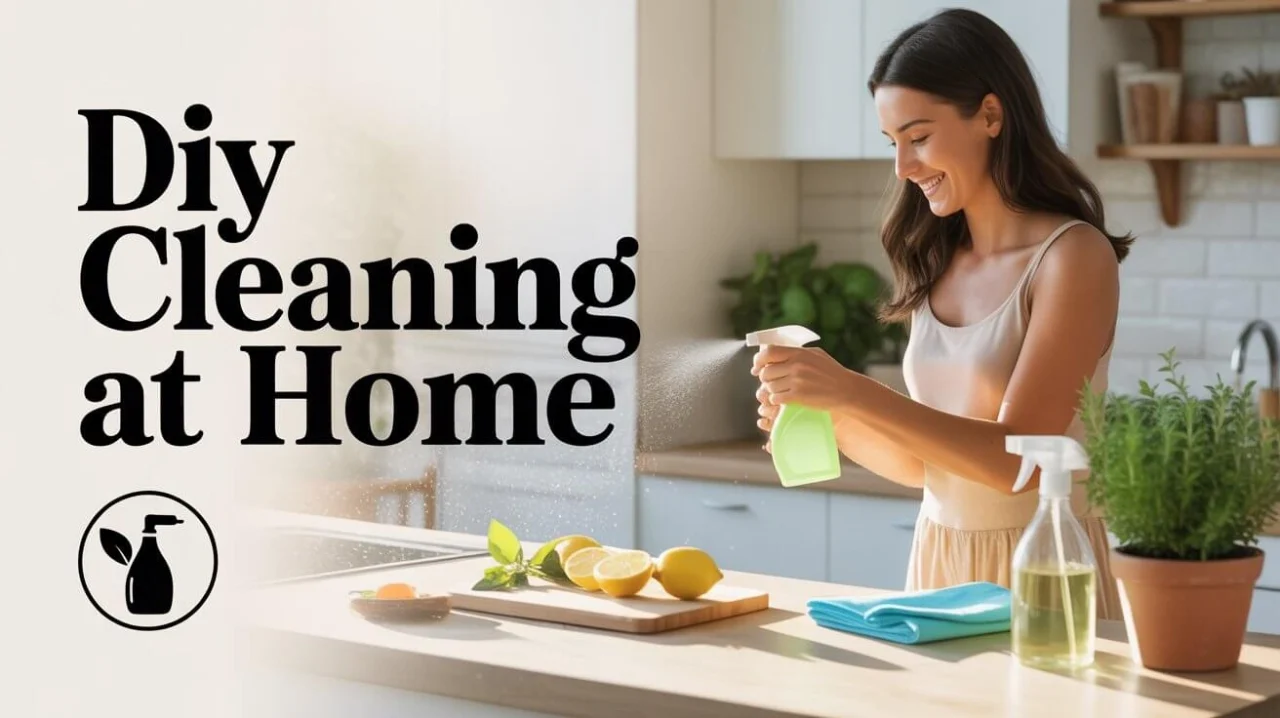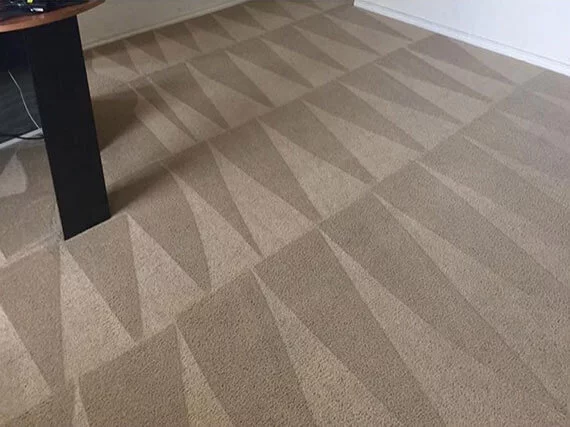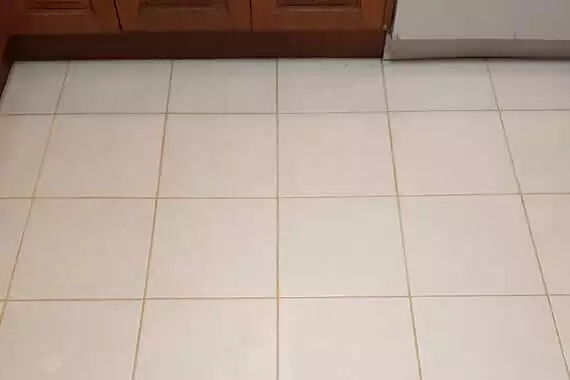Keeping your home fresh and spotless doesn’t have to mean relying on expensive store-bought products. Over the years, I’ve discovered that DIY cleaning at home can be just as effective — often safer, cheaper, and surprisingly fun. Whether you want to avoid harsh chemicals or simply make your cleaning routine more eco-friendly, learning a few simple tricks can make a big difference.Let’s dive into some easy, budget-friendly DIY home cleaning tips that keep your living space shining without breaking the bank.
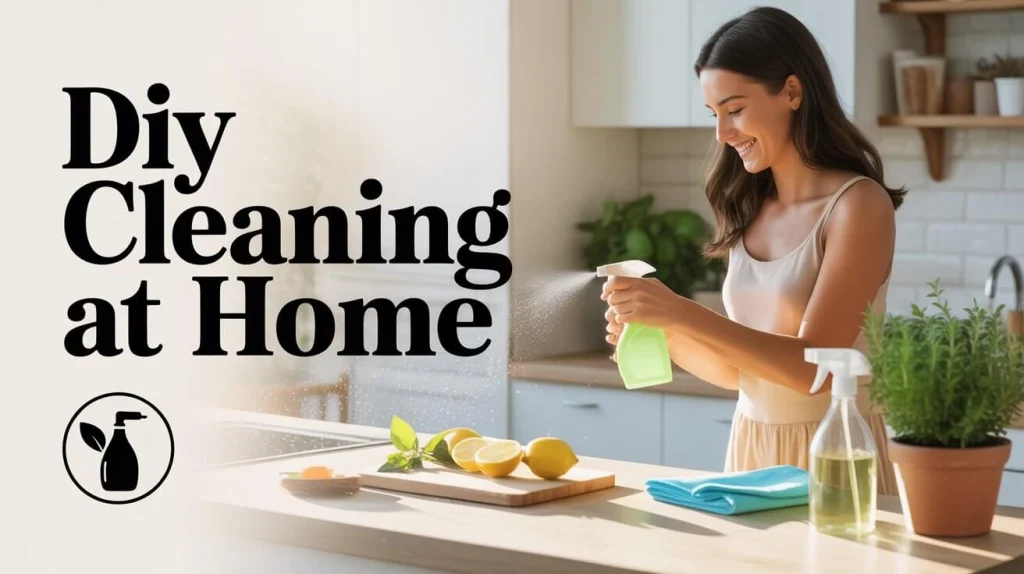
Content
All-Purpose Cleaners for DIY Cleaning at Home: A Versatile Start
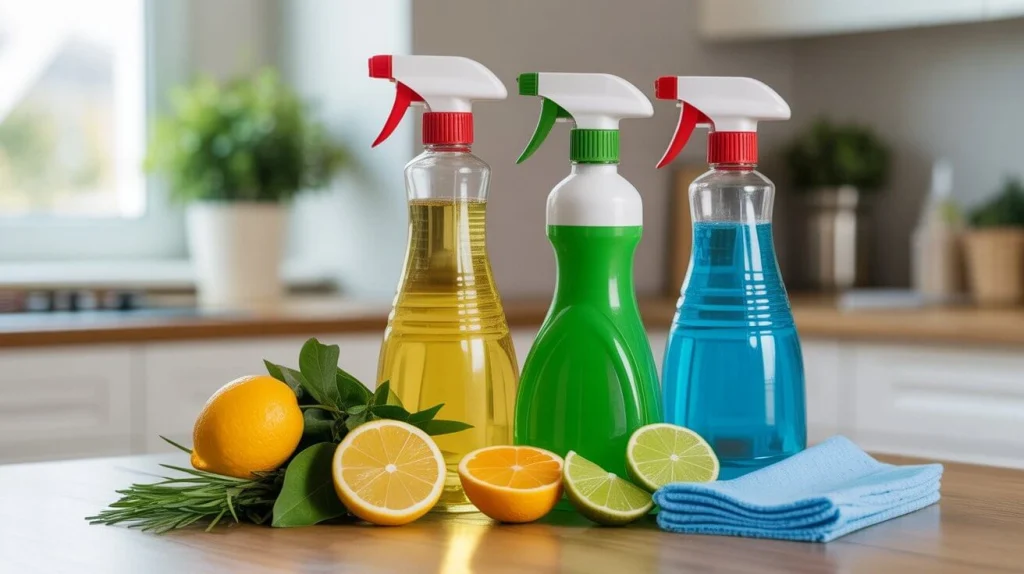
Every clean home begins with a reliable all-purpose cleaner. One of my go-to recipes for DIY cleaning at home is simple — mix equal parts water and white vinegar, then add a few drops of lemon essential oil. This cleaner works beautifully on countertops, floors, and even glass surfaces.
The best part? It’s chemical-free and leaves a fresh, natural scent. When you create your own cleaning products at home, you know exactly what’s going into them — no hidden irritants, no strong chemical odors, and no unnecessary waste.
Pro Tip: Add a teaspoon of baking soda for extra scrubbing power on tough stains and see how effective DIY cleaning at home can be using simple, eco-friendly ingredients.
Microfiber Cloths: Gentle Yet Powerful
If there’s one cleaning tool I can’t live without, it’s a microfiber cloth. These small, soft wonders attract dust like magnets — perfect for daily dusting, wiping mirrors, and cleaning electronics.
Unlike paper towels, microfiber cloths can be washed and reused hundreds of times, saving both money and waste. I keep separate colors for different rooms — blue for the kitchen, green for bathrooms, and yellow for living spaces — to prevent cross-contamination.This simple organization hack keeps cleaning efficient and hygienic, especially during deep cleaning at home sessions.
Natural Powerhouses: Baking Soda and Vinegar
If you’re wondering how to make your own cleaning products at home, start with these two household staples. Baking soda and vinegar are a dynamic duo that can tackle almost any mess.
- Sprinkle baking soda on sinks, tubs, or stovetops.
- Spray vinegar over it and let the fizz do the work.
- Scrub lightly and rinse clean — the result is a sparkling surface without a single chemical.
This natural combination works beautifully for deodorizing drains, cleaning grout, and removing stubborn stains from pots and pans.I once used this method to clean a rental kitchen that hadn’t been deep cleaned in months — the result amazed even the landlord!
Essential Oils: Add Fragrance and Function
DIY cleaning at home doesn’t have to smell boring. A few drops of essential oils like tea tree, lavender, or eucalyptus can make your homemade cleaners both fragrant and functional.
- Tea Tree Oil: has antimicrobial properties, great for bathrooms.
- Lemon Oil: cuts grease and leaves a fresh scent.
- Lavender Oil: adds a calming aroma to your cleaning routine.
These oils not only make cleaning more pleasant but also add mild disinfecting power — perfect for families looking for natural ingredients for DIY cleaning solutions.
Rubber Gloves: Protect Your Hands
Even when using eco-friendly cleaning tips, protection is key. Rubber gloves prevent your hands from drying out and shield against hot water or stubborn grime.Choose reusable gloves made from natural rubber or latex-free materials if you have sensitivities. Keep a pair near every cleaning station so you’re never tempted to skip this simple safety step.
Steam Cleaner: Deep Clean Without Chemicals
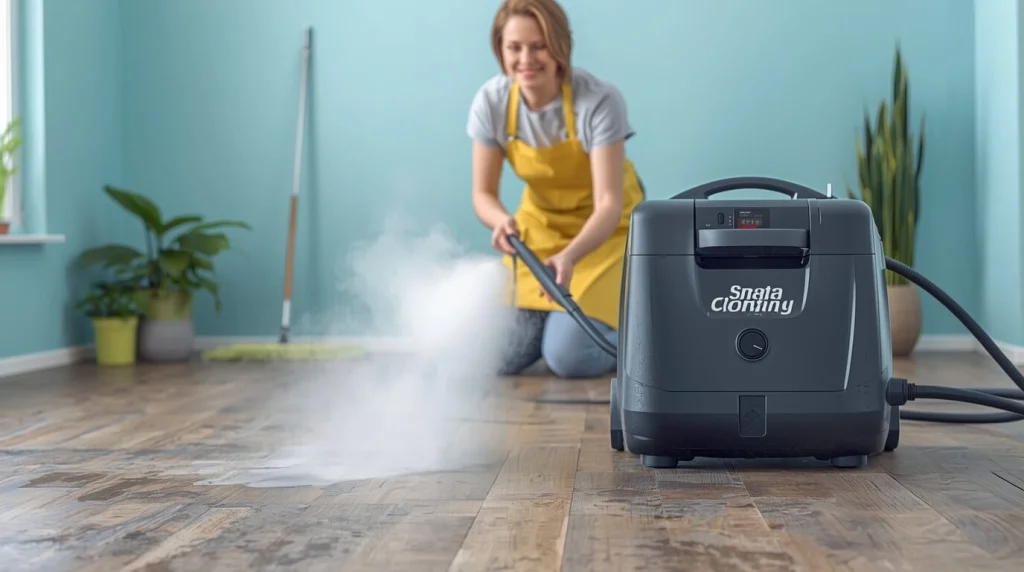
One of my favorite tools for DIY cleaning at home without chemicals is a steam cleaner. It uses only water but delivers powerful results.From bathroom tiles to upholstered furniture, steam cleaning removes dirt and kills germs without adding any residue. It’s ideal for homes with kids or pets — no harsh odors, no toxins.If you don’t own one, you can rent or borrow from local hardware stores. It’s worth it for occasional deep cleaning projects like carpets, curtains, or mattresses.
Safety and Storage Tips for Homemade Cleaners
Making your own cleaners is rewarding, but storing them properly is essential.
- Always label spray bottles clearly with contents and date.
- Keep vinegar-based solutions away from marble or granite (acid can damage stone).
- Store baking soda and essential oils in a cool, dry place.
- Never mix hydrogen peroxide with vinegar — it can create harmful fumes.
Following these precautions ensures your DIY cleaning at home improvement remains safe and effective every time.
Real-Life Case Study: A Family’s Transition to DIY Cleaning
Last year, one of my close friends, Ayesha, decided to switch her family to natural cleaning solutions after her toddler developed skin sensitivities. She replaced her chemical sprays with homemade cleaners — mainly baking soda, vinegar, and essential oils.Within a few weeks, she noticed cleaner air, fewer allergic reactions, and even a shinier kitchen sink. The best part? Her cleaning costs dropped by almost 40%.Now, her family keeps a small “DIY cleaning station” under the sink, stocked with labeled jars and reusable bottles. Her experience proves that small lifestyle changes can lead to healthier homes — and a greener planet.
Pros of DIY Cleaning at Home
Cost-effective compared to commercial cleaners
Environmentally friendly and sustainable
Safe for children, pets, and allergy-prone individuals
Encourages mindful, intentional living
Cons to Keep in Mind
Some DIY mixtures have shorter shelf lives
Natural solutions may require a little more scrubbing
Essential oils can stain or irritate if overused
Conclusion: Clean Smart, Live Healthy

Learning the art of DIY cleaning at home is more than just a money-saving hack — it’s a lifestyle shift toward mindfulness, sustainability, and better health. With the right home cleaning hacks, simple ingredients, and a little effort, you can create a home that shines naturally. For deeper maintenance, consider pairing your routine with professional Duct Cleaning Services to improve indoor air quality and keep your entire home environment fresh and healthy.
Keeping your home spotless doesn’t have to be complicated. With a few simple routines and natural cleaning solutions, every corner can shine effortlessly. Want to reach homeowners interested in these tips? Advertise with us and connect directly.
Whether you’re mixing up an all-purpose cleaner, steaming your carpets, or experimenting with budget-friendly DIY home cleaning tips, remember: every small change adds up to a cleaner, greener, and happier home. Even builders and renovation experts agree — maintaining a freshly built or remodeled space starts with proper cleaning habits.So grab your gloves, mix your solution, and let your next cleaning day be powered by your own hands — and nature’s best ingredients.
FAQs
Is baking soda a good cleaner?
Baking soda is a gentle, natural cleaner that removes stains, deodorizes, and boosts DIY cleaning at home results.
What not to mix with baking soda?
Avoid mixing baking soda with vinegar or lemon juice in closed containers — it can fizz up and lose cleaning power.
Can I mix vinegar and dish soap?
Yes, mixing vinegar and dish soap makes a great grease-cutting spray for DIY cleaning at home, especially in kitchens.
What are the 5 basic ingredients in making a homemade cleaning solution?
Water, vinegar, baking soda, dish soap, and essential oils are the top 5 for safe, effective DIY cleaning at home.

Marion is a dedicated home improvement blog author who has a passion for writing. She enjoys blogging about all sorts of topics, from interior design to landscaping and more! She loves the outdoors and spending time in nature with her family. She also likes to bake in her free time.

